MOST investors will opt for a multi-asset, or balanced, approach to their domestic assets, but they often prefer to invest internationally through a dedicated equity fund. And it is more convenient to invest through rand-based funds as they can be bundled on the same platform as domestic investments. There is also no need for tax clearance, unlike an investment into a classic offshore fund.
The Association for Savings & Investment category Global Equity General has almost 50 options. Investors Monthly looks at five, but it should not be taken as a recommended short list: some other options will be covered in future issues.
The top fund over the past year was the Investec Global Opportunity Equity fund, which focuses on the current sweet spot of high quality franchise businesses — just the opposite of the kind of shares that Sanlam Global Equity focuses on and outside the usual hunting grounds of the long-established Orbis Global Equity Fund.
As in local funds, classic value funds have done badly, with RECM Global coming last and Sanlam’s fund not far behind. It was not all bad news for Sanlam, however, as its SIM Global Equity Income Fund was second for the year. The fund, still less than four years old, aims to invest in shares with an attractive and growing capital income as well as real capital growth over three years. It has given a dollar yield of 4% over each of the past three years, far better than the returns from government bonds or cash.
Investors who do not want to take manager risk can invest in passive portfolios: the Db-x Trackers MSCI World Equity exchange traded fund is one option. Those who prefer the unit trust route can opt for the Sanlam MSCI World Equity feeder fund or the Sygnia Skeleton International Equity fund of funds.
At the other extreme investors can take their chances with funds set up by boutique managers, such as Autus, Anchor, Bateleur and BlueAlpha. All these have had top-performing funds.
With modern IT it should be possible to pick international shares from Johannesburg or Cape Town, but there is still a perception that it is an advantage to operate in a more central spot such as London or New York. Coronation invests in a range of international managers conducting research through a satellite office in London. But it has now decided to offer its own direct international product run from Cape Town, and in January 2015 it launched its Global Equity Select fund, run by former chief investment officer Louis Stassen. Its track record is still too short, but it is a fund to watch. Another fund which needs a longer track record is the Foord Global Equity fund, run by a team in Singapore.
But there is still something comforting about having money managed by a large house. Stanlib Equity Feeder Fund, for example, is managed by Columbia Threadneedle, which has over 500 portfolio managers and analysts. It has been a top quartile performer over the past year. It has a preference for strong growth companies and has been overweight IT, consumer discretionary and health care, and underweight in energy, materials, financials and utilities.
Investec does not have quite such a large team but in its Worldwide feeder fund it offers access to its mainstream Global Equity fund. This has adopted its patented Four Factor system, which gives a more diversified portfolio than the niche Global Opportunity Equity Fund.
The five funds give a range of strategies and styles. Absa, like Stanlib, has decided to hand over its global equity fund to a large London-based house, in its case Schroders. Absa International has been changed into a feeder to the Schroders Global Recovery fund, the most aggressive global equity fund in the Schroders stable, which is a deep value fund.
Allan Gray Orbis Global Equity feeder fund is sometimes referred to as a value fund, but founder portfolio manager Allan Gray prefers the term contrarian. It wasn’t a good market to be in contrarian stocks like oil recently.
The Nedgroup Global Equity Feeder Fund has the most concentrated portfolio, which turned out to be the right strategy as it was the top mainstream global equity fund over the past year, with five of its 40 shares accounting for 25% of the portfolio.
The Old Mutual Global Equity fund is the most diversified of the five featured. It typically has more than 300 shares and relies on quantitative filters to help choose shares. It is also the only one of the five to be style agnostic and to use filters relevant to factors such as value, quality and momentum.
Sanlam Global Equity focuses on value factors such as PE ratios and price to book. It is run by the Sanlam Four team in London and should bounce back.
Absa Global Value Feeder Fund
The fund was started in 1994 as Absa International and was previously run by Absa’s Greg Kettles as a large cap fund. But last August, as part of Absa’s strategic alliance with London-based Schroders, it became a feeder fund into the Schroders Global Recovery fund.
It was an interesting choice as the fund has underperformed the MSCI World by 15.5% over the past year.
The fund has had three-year negative earnings growth of 5.2% and achieved a return on equity of 11%, compared with 17.3% from the benchmark.
It was started in October 2013 and is run by Nick Kirrage and Kevin Murphy.
It has 52 shares, in contrast to the Absa Core Equity fund, which invests in the Schroders Core Equity fund, with almost 800 shares.
The fund invests primarily in equities that have suffered a severe setback in either share price or profitability, but where the long-term prospects are believed to be good.
There are no restrictions of size or sector. It has an eclectic mix of businesses and its second-largest holding is Anglo American, which certainly qualifies as a business that needs to recover.
The fund also holds South32, the collection of noncore assets spun off by BHP Billiton.
It holds the “boring”, unglamorous information technology shares such as Intel and Cisco, the faded technology business Technicolor as well as two US private education businesses, Strayer and Apollo, the recovering state-rescued British lender Royal Bank of Scotland and that notorious, unfashionable cash cow Philip Morris.
Equally noticeable is the lack of fund manager favourites such as the Fang shares — Facebook, Apple, Netflix and Google — or even Exxon Mobil, General Electric or Johnson & Johnson.
Ultimately, the judgment of the portfolio managers performs an important overlay function in looking for opportunities and evaluating risks, in a way that no spreadsheets can do.
Nedgroup Global Equity Feeder Fund
The fund is the most concentrated global equity fund available in rands. It is modelled on the Veritas global equity strategy. Veritas was previously known as the real-return manager, and there is an emphasis on capital preservation. A deep fundamental research process identifies quality and cheapness.
London-based Veritas was started in 2003. Its main team members worked at Newton, a well-established fund manager known for its real-return approach to asset management.
Veritas is a boutique manager with US$16bn under management. The global equity fund targets annualised portfolio returns of inflation plus 6%-10%. It looks for a 15%/year return, which effectively doubles value over five years.
Head of marketing Antony Burgess says beating a benchmark such as MSCI World is just a byproduct of the real-return approach, at least when measured over a sensible time period. If it needs to, Veritas will protect portfolio value through derivatives, which it did in the buoyant 2007 markets.
Burgess says the way to beat inflation is to focus on highly cash-generative companies, which can protect future cash flows. And it rigorously applies its own rules to determine that there is an adequate margin of safety. Burgess says the fund is unlikely to buy into sectors where cash flow is highly volatile, such as autos and airlines.
It has no exposure to Japan. Nor does it invest much in resources or energy, as they are hostage to commodity prices.
Veritas operates off a universe list of 250 companies. At the moment there are no European banks on the list, but a few Asian banks in Thailand and Singapore which are more dependent on fee income than their Western counterparts appear on it. The house prefers capital-light financial businesses such as the London and Australian stock exchanges and American Express.
Like Orbis, Veritas has a focus on US cable television suppliers, and has Comcast and Time Warner in its top 10, but unlike Orbis it is also exposed to the popular health-care sector through United Health and Roche.
Allan Gray Orbis Global Equity Feeder Fund
The fund feeds directly into the Orbis Global Equity Fund. Orbis is Allan Gray’s sister company, based in Bermuda and also controlled by the Gray family.
The fund has had very strong performance since it was launched in 1990, with an 11.1% annual return in dollars compared with 6.3% from the FTSE World Index and 4.6% from the average global equity fund.
Orbis was one of the world’s first global equity funds to disregard benchmarks, concentrating instead on areas in which it expected the highest returns. The fund always has 100 shares or fewer. Its top three shares happen to be technology shares, but they are not the big beasts such as Apple, Alphabet and Amazon, but Chinese share NetEase, Motorola Solutions and Qualcomm. NetEase is a fast-growing business; the latter two have cash reserves equivalent to more than 25% of their market cap and durable earnings, yet they are out of favour.
But over the past year there has been a 9.0% fall compared with a -5.6% return from the benchmark. Orbis’s SA representative, Tamryn Lamb, says there was a bias towards two sectors which underperformed, energy and emerging markets.
One of the top 10 holdings, for example, is Apache, an oil exploration and production company with reserves in the US, the North Sea and Egypt. It purchases old assets cheaply from other companies, then fine-tunes the extraction to increase production. It has executed this strategy well since buying its North Sea fields from BP.
Orbis believes Apache can survive an extensive period of low prices. The emerging markets exposure is primarily through Russia, which is about 6% of the fund, with the main positions being the most prominent bank, Sberbank, and the oil and gas giant Gazprom, and particularly through China, which is 13% of the fund.
In 2015 it bought JD.com as a second China e-commerce play alongside NetEase. Another theme in the portfolio has been into pay-television-based groups Charter Communications, Time Warner Cable and Vivendi.
Old Mutual Global Equity
The fund has been a frequent winner of industry awards. It is run by Ian Heslop, Amadeo Alentorn and Mike Servent.
Heslop attributes the success to a level of consistency. Instead of sticking to one style it takes elements of value, growth and momentum. Recently its price-driven components within market dynamics have generated positive returns, but there were weak returns from its dynamic valuation filter, which is focused away from risky shares.
“We recognise when we are not going to be rewarded, and today’s market favours quality over value,” Heslop says.
“We don’t make big macrocalls but rather focus on how the market is behaving and how the sentiment will affect themes.
“At the turn of the year the market was affected by many of the same trends as before, such as weak oil prices, a weaker euro, a rising US dollar and tumbling emerging-market currencies. And it was a time of heightened volatility and pronounced style rotations. The sentiment is measured separately in each of the large regions, such as the US and Japan.”
Heslop says the fund does not buy companies as much as it buys into different types of markets. The managers do not do company visits or meet management, and rely heavily on tailored quantitative research. This is very different from a high-conviction manager such as Veritas and Orbis.
The fund holds about 400 shares and it does not downweight any share by more than 0,5% of its weighting in the MSCI, hence its three largest holdings are tech giants Apple, Amazon and Alphabet (Google).
It has a large exposure to pharmaceuticals (Pfizer, Gilead Sciences and Novo Nordisk) and just one financial (Citigroup) in the top 10.
Heslop says that in theory there is no diversification after 30 shares, but this is naive and does not take into account how outperformance of the market (alpha) works. Such a low exposure would leave the portfolio exposed to thematic or style risk.
But at the other extreme, Heslop says, to hold 1,000 shares would diversify away any potential alpha.
Sanlam Global Equity Fund
The fund is firmly in the concentrated portfolio camp, though with about 50 shares it is more diversified than Nedgroup’s 40-odd.
Senior portfolio manager Colin McQueen says the fund has an instinctive value bias, indicated by its price:earnings ratio of 9.9, compared with 14.9 for the MSCI World Index and price to book of 1.1 compared with the market’s two times. He says the fund has underperformed as there has been an unusually long run of expensive shares becoming more expensive and of cyclical shares doing badly. He says the team finds a lot more opportunities in the two thirds of the market made up of cyclical shares than the third made up of more stable noncyclical shares.
It has a number of positions in energy such as Total, Petroleum Geo-Services, ENI and Anadarko Petroleum. It argues that energy companies look attractive for any investor with a time horizon longer than five months. The world needs continuous investment in capex to meet rising oil demand and to offset natural declines from existing production. McQueen expects oil shares to revert to the mean, which is parity on price to book with the overall market, yet they are now trading at a 40% discount.
There has not been this level of discount since the 1920s. He says energy is more attractive than mining as it is far less dependent on China’s demand. The fund’s largest holding is Express Script, a US pharmacy benefit manager which processes claims for insurers and corporate health schemes in the US: it has had a wobble because of a contract dispute with a large customer but the underlying business remains sound. Over the past quarter the top 10 holdings have changed markedly, as Hewlett-Packard was demerged and holdings were trimmed in UnitedHealth, Arrow Electronics and Imperial Tobacco.
A big winner recently has been Samsung Electronics, as shares rose sharply on news of a share buyback. It is now the fourth-largest holding in the fund. Another winner was NN Group, the Dutch insurer, as investors appreciate how strongly capitalised the business really is.
The main themes of the fund now are old line technology businesses — Oracle and Microsoft are in the top 10. Another is health care. Gilead Sciences may be the world’s leading listed biotech business, yet it trades on a p:e of seven.
Another underrated health-care stock is Medtronic. It recently acquired a new management team from General Electric. It has a free cash flow yield of 6%. A third theme is financials, still a bombed-out sector.
Top 10 shares include HSBC and Bank of America with BNP Paribas just outside, and trading on a p:e of seven.
McQueen says many investors still prefer the warm feeling of safety from sectors such as the overpriced consumer staple businesses (the Nestlés and Unilevers) but this strategy is unlikely to provide attractive returns on capital.

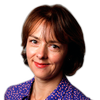

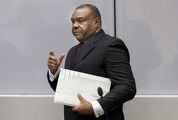
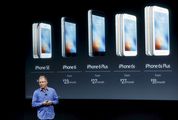



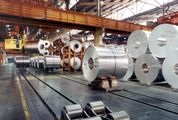


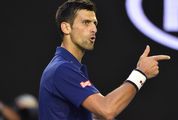



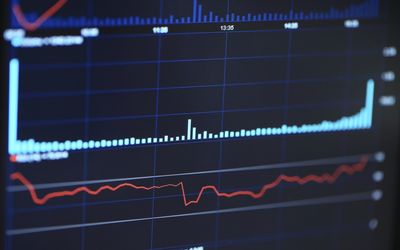





Change: 1.19%
Change: 1.36%
Change: 2.19%
Change: 1.49%
Change: -0.77%
Data supplied by Profile Data
Change: -0.08%
Change: 0.12%
Change: 1.19%
Change: 0.00%
Change: 0.10%
Data supplied by Profile Data
Change: 0.32%
Change: 0.36%
Change: 0.35%
Change: 0.22%
Change: 0.23%
Data supplied by Profile Data
Change: 0.02%
Change: -0.51%
Change: -0.19%
Change: -0.17%
Change: -0.15%
Data supplied by Profile Data